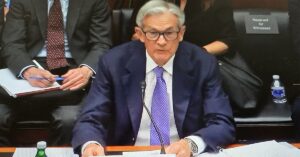Commercial mortgage brokers do not have to be economists or experts in monetary policy. But it is essential that a broker has a working knowledge of economics and an understanding of how monetary policy influences the commercial real estate market — including cost and availability of credit. It is almost impossible to discuss commercial real estate without delving into economics, interest rates and inflation, which will eventually lead to discussion of the Federal Reserve and monetary policy.
Inflation was on pace to end 2022 at its highest yearly level since 1981, which has forced the Fed to raise its baseline rates. The central bank is concerned about persistently high inflation and has emphasized its intent to continue rate hikes, despite the pain this will impose upon the U.S. economy.
Over the past several years, the economy has built up a lot of energy. This is likely to keep inflation higher than the Fed wants, which has led to its reduction of the nation’s money supply and an application of the monetary brakes in an attempt to alleviate excessive spending. Consequently, this will reduce investor demand and prices for commercial real estate.
The Fed’s target inflation rate is 2%. Translated, this means that businesses can increase their prices by 2% each year and the market will remain competitive. Employees can seek a 2% wage increase based on inflation so they can continue to afford the overall cost of living. But if inflation moves beyond this target, it can cause uncertainty within the markets.
To combat inflation, the Fed raised benchmark interest rates multiple times last year and has indicated that further increases can be anticipated. The period of cheap financing is no longer a reality for commercial real estate investors, which likely equates to higher underwriting standards and fewer closed deals.
Inflation impacts every aspect of our lives, including the costs of food, energy and all types of real estate.
The Fed is aggressively raising interest rates to slow price increases. It intends to keep rates high until it is certain that inflation has been tamed. Fed Chairman Jerome Powell has said the central bank’s goal is to increase rates in an attempt to slow inflation but not so much as to cause a recession.
Widespread impact
In the discipline of economics, inflation is a broad acceleration in the prices of goods and services. As prices increase, currency loses value, and this leads to an overall reduction in the purchasing power of the dollar. Quite simply, inflation occurs when everything (including commercial real estate) becomes more expensive, which tends to become a drag on all markets.
Inflation also is considered to be a measurement of purchasing power. It can be defined as the rate at which the prices of goods and services change over a given period of time. As inflation rises, consumer and business investment spending declines. If it goes unchecked, it is disastrous for every sector of the economy.
Inflation impacts every aspect of our lives, including the costs of food, energy and all types of real estate. As inflation persists, the outlook for U.S. economic growth has darkened and higher interest rates are fueling fears of a recession.
It seems that the definition of recession has changed recently. Previously, it was considered to be two consecutive quarters of decreases in gross domestic product (GDP). A less definitive explanation has emerged and includes a significant decline in economic activity resulting from several factors, including high unemployment, a slowdown in the production and sales of goods, wage decreases and negative GDP performance.
Causes of inflation
Inflation is caused by numerous factors. Maybe the most common reason is heightened spending that exceeds the availability of goods and services. As a result, demand exceeds supply, so manufacturers and sellers begin to raise prices.
Some economists think that monetary policy is a major cause of rapid inflation. For example, inflation rises when the Fed sets interest rates too low, expanding the money supply and stimulating excess spending and economic growth, such as the type experienced in the U.S. since the Great Recession.
Demand is further heightened by government stimulus efforts. Some economists attribute the surge in inflation to product shortages tied to global supply chain problems principally caused by the COVID-19 pandemic. Other causes include excessive consumer demand driven by historically strong job and wage growth.
Yet another cause of inflation is a lack of production. If there are not enough workers to produce the goods or services being demanded, this too will result in price increases. Labor is generally the single largest element in the total cost of producing goods.
Periodically, a recession results from continued inflation. Rising unemployment then causes disruption to the real estate and mortgage markets. But a big increase in the unemployment rate also puts downward pressure on inflation as the economy slows.
Real estate pressures
The concept of inflation has been around for a long time as prices have always fluctuated throughout the various stages of a business cycle. A business cycle refers to periods of growth or decline in the overall economic activity of a nation. Since the mid-1800s, the U.S. economy has gone through 34 business cycles, according to the National Bureau of Economic Research.
One method to measure inflation is the Consumer Price Index (CPI), which calculates the monthly change in prices paid by U.S. consumers. The CPI is one of the most widely used gauges of inflation by policymakers, financial markets and businesses. It has many uses, including adjustments to historical economic data, increases to federal income payments and tax brackets, and changes to rents and wages.
Commercial real estate investments are viewed as a long-term hedge against inflation since property values usually increase at the rate of inflation. With leases, it is common to write in specific provisions that allow for periodic rent adjustments, which frequently following an indicator such as the CPI.
This tends to shield the owner or investor from rising expenses caused by high inflation. Commercial real estate is thought to be an asset that creates predictable cash flow, which should generate enhanced appreciation and result in higher values than investments with lower or less stable cash flow.
Also entering into the mix is the concept of capitalization (cap) rates, one of the most commonly used methods for quantifying the financial return on a real estate investment. The cap rate is calculated by dividing the property’s net operating income (NOI) by its estimated value.
For example, a property that generates NOI of $100,000 (before debt service) and is valued at $2.5 million has a cap rate of 4%. If that same $2.5 million property generates NOI of $75,000, it is said to have a 3% cap rate. The lower the cap rate, the higher the perceived property value. As the economy becomes more volatile, cap rates will typically increase to reflect the investor’s perception of greater market risk.
What’s next?
The economy has shown signs of a broad slowdown as consumer and business spending have weakened due to high inflation and rising interest rates. Economic uncertainty is growing and experts are concerned about the possibility of a recession in the next 12 months.
Since we have not seen the full impact of higher interest rates as they work their way through the economy, it is difficult to predict the trajectory of the economy with any degree of certainty. But we can be assured that changes in interest rates have a significant impact on commercial real estate transactions.
The outlook for tomorrow’s commercial real estate market is obscured by greater economic uncertainty tied to higher inflation and interest rates, international conflict and supply chain disruptions. But higher borrowing costs commonly reduce investor interest in future deals. As the cost of borrowing becomes more expensive, fewer new construction projects will surface and there will be a considerable reduction in demand for existing properties.
Commercial mortgage brokers can distinguish themselves in this environment by being knowledgeable about economic developments, changes in the real estate market and the resulting adjustments by lenders. This is when leadership skills are needed and one’s understanding of the capital markets — along with company strengths and weaknesses — become apparent. Not all brokerages will need to make the same strategic adjustments.
Keep in mind that asset prices are likely to decline, possibly in the double-digit range. At extreme levels, we may experience price corrections in certain markets that are similar to those recorded during the 2008 financial crisis. To remain successful, a detailed business plan, a laser focus and flawless execution are needed. Remember, this too shall pass. ●






